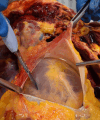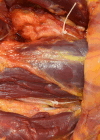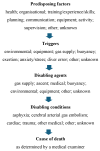The investigation of diving accidents and fatalities
- PMID: 39288927
- PMCID: PMC11659060
- DOI: 10.28920/dhm54.3.217-224
The investigation of diving accidents and fatalities
Abstract
Diving accidents result from a variety of causes including human error, inadequate health and fitness, environmental hazards and equipment problems. They usually involve a cascade of events resulting in the diver being injured or deceased. The accuracy and usefulness of a diving accident investigation relies on well-targeted interviews, good field investigation, evidence collection and preservation, and appropriate equipment assessment. In the event of a fatality, a thorough and targeted autopsy is indicated. Investigators should have the appropriate knowledge, training, skills and support systems to perform the required tasks. Relevant investigations include the victim's medical and diving history, the dive circumstances and likely accident scenario, management of the accident including rescue and first aid, equipment inspection and testing and a thorough postmortem examination conducted by a forensic pathologist with an awareness of the special requirements of a diving autopsy and the knowledge to correctly interpret the findings. A chain of events analysis can determine the likely accident scenario, identify shortcomings and inform countermeasures.
Keywords: Arterial gas embolism; Autopsy; Coroner; Decompression sickness; Diving deaths; Diving incidents; Investigations; Scuba.
Copyright: This article is the copyright of the authors who grant Diving and Hyperbaric Medicine a non-exclusive licence to publish the article in electronic and other forms.
Conflict of interest statement
The authors report no conflicts of interest in this work.
Figures






References
-
- Walker D. Report of Australian Diving Deaths 1972-1993. Melbourne: J.L. Publications; 1998.
-
- Cumming B, Peddie C. National Diving Committee (NDC) diving incidents report 2014. Ellesmere Port, Cheshire: British Sub Aqua Club. [cited 2022 May 3]. Available from: http://www.bsac.com/page.asp?section=1038§ionTitle=Annual+Diving+Inc...
MeSH terms
LinkOut - more resources
Full Text Sources
